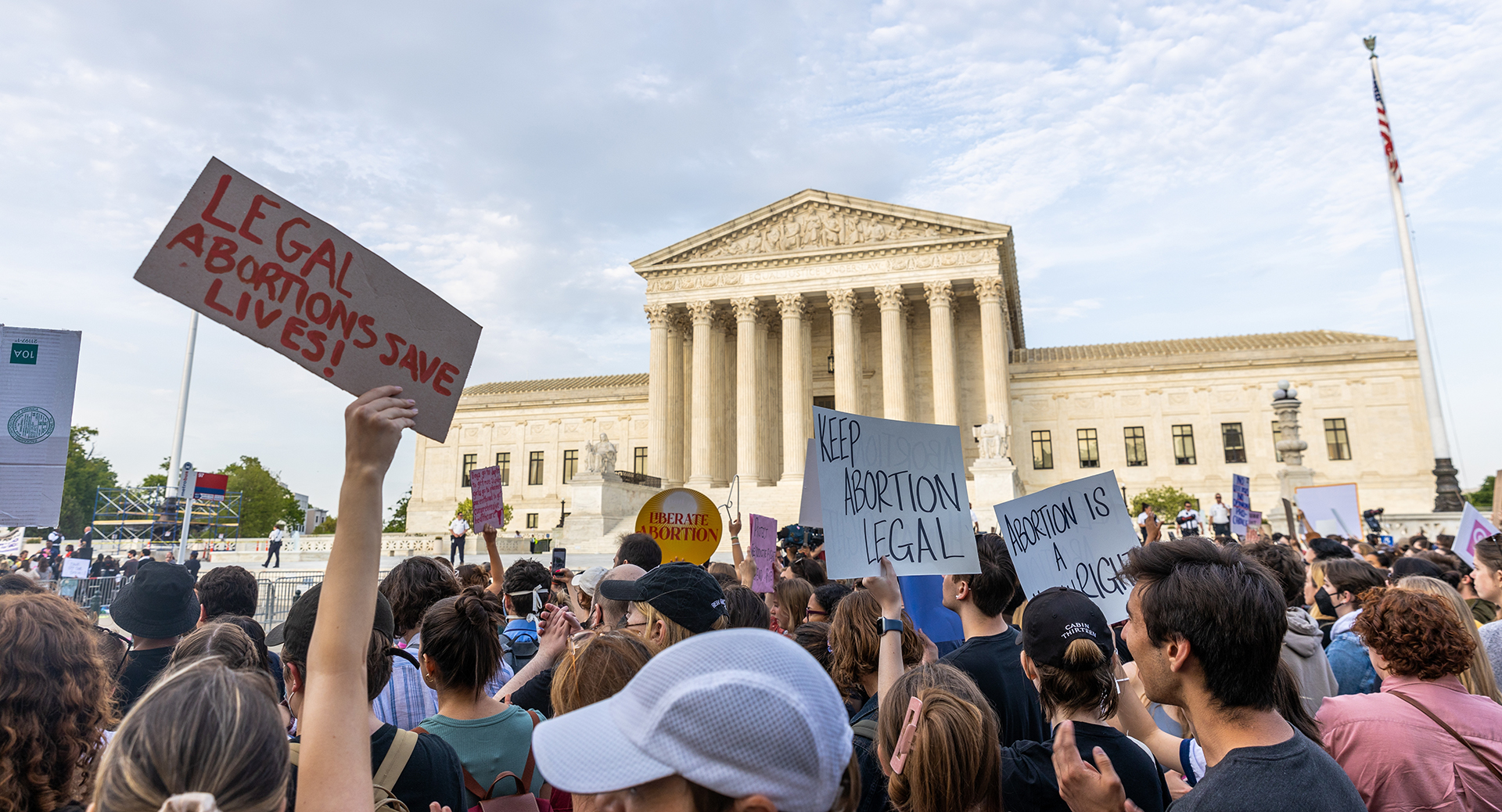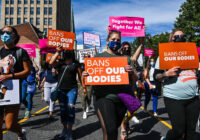The US Supreme Court’s Dobbs v. Jackson ruling last summer that overturned the previous two abortion rulings marked the latest confrontation between the “two Americas.” Pro-choice observers saw the decision as yet another ploy by the court’s conservative majority to accommodate a conservative agenda that strips pregnant people of their right to make free choices about their own bodies. Meanwhile, the pro-life camp welcomed the court’s decision as an overdue prohibition against ending the lives of pre-birth humans.
As it is often the case in conflicts where parties lack empathy for each other, each side of the abortion issue seemed to interpret the Dobbs ruling through the lens of political talking points without exploring the substance of the ruling first. However, when one resists the appeal of simplistic secondary sources that comment on Dobbs (sensation-seeking news reports; alarmist commentaries; and -sadly in our day- memes, sound bites, and tweets) and actually reads the court’s opinion, the 213-page legal analysis makes three things clear to a dispassionate observer:
- Dobbs v. Jackson was not a political decision. It was an act of depoliticization.
- The Supreme Court did not ban abortion. It delegated to state legislatures the authority to regulate abortion.
- Dobbs will not end abortion in America. It may even expand it.
A Question of Constitutional Authority
Dobbs v. Jackson contributes to depoliticization of the Supreme Court by simply asking if the court possesses the requisite authority to adjudicate the claims. The six justices who ended up constituting the majority opinion approached the abortion issue from a judicial perspective of restraint. Unlike the majorities in the previous two courts that ruled on abortion (Roe and Casey), the Dobbs majority asked whether the Supreme Court has the authority to declare abortion a constitutional right to begin with. Before asking normative questions that inescapably invite political values into judgments (“Should laws treat feti as humans?”, “What abortion restrictions must be imposed in which phase of pregnancies?”, “Should pregnant people have a right to end a life other than theirs?”), these justices asked a fundamental question that our system of checks and balances requires them to ask: Is abortion a constitutional issue that falls within the purview of the US Supreme Court?
A Young American Woman Loses Faith After Dobbs Ruling
The Dobbs majority concluded it is not a right, given, amongst other things, there is no reference to abortion in the US Constitution. When Constitutional provisions do not explicitly provide a right, such a “right” can be endorsed by the Supreme Court if the practice it supports has a long societal history as a balancing act of conflicting interests that can be settled for the sake of public order. For example, consider Obergefell v. Hodges, 2015’s expansion of the already-existing right to marry from heterosexual couples to homosexual couples, or Gideon v. Wainwright, the 1963 expansion of the already-existing right to counsel from capital offenses to all crimes. The Dobbs majority contends that Roe v. Wade’s asserted constitutional right to abortion did not pass this scrutiny. In 1973 when Roe was issued, abortion had never been a common practice in US history, there was no state or federal statute or an academic work that endorsed a right to obtain abortion, and two centuries of American experience had treated abortion as a criminal activity to a large extent.
In the absence of a legal and historical support for abortion, the Roe majority extracted the right to abortion from the right to privacy (implicitly) recognized by the 1st, 4th, 5th, 9th and 14th Amendments, while the Casey court relied upon the notion of liberty advanced by the 14th Amendment. However, as the Dobbs majority notes, privacy is too broad of a right and abortion a too morally consequential of a procedure for the two notions to be linked to one another in a way that facilitates a fair subjugation of the opposition’s concerns.
Weaknesses in Roe and Casey’s reasonings were evident in the arbitrariness of the standards they set. Both rulings struck a balance between the competing interests of feti and pregnant people with trimester and viability thresholds, though there is no legal text, principle, or precedence in American jurisprudence to endorse such thresholds. Moreover, Casey’s vague “undue burden” provision made uniform enforcement unpractical. Accordingly, the court’s endorsement of abortion rights had to be overturned as a judicial overreach that was an “egregious wrong on a collision course with the Constitution from the day [it] was decided”.
The Abortion of American Democracy Has Been Bloody and Messy
The Proper Role of the Courts
The central thesis in Dobbs v. Jackson is that the US Supreme Court is not the proper authority to regulate abortion. Because the US Constitution has no link to abortion, it is not possible for the court to regulate abortion without creating arbitrary notions (such as viability or trimester thresholds). To do so would be an unacceptable usurpation of the legislative branch’s policymaking rights by the judicial branch of the US government. If the US Supreme Court — a court that consists of nine politically appointed, electorally unaccountable justices — were to regulate a subject like abortion under the guise of interpretation, it would strip the American people of their right of democratic self-determination.
By not formulating federal law vis-a-vis judicial review, the people’s state representatives are now able to exert authority over regulating abortion. Dobbs v. Jackson expands the democratic credentials of the United States as an audacious experiment in decentralized democracy. Consistent with that experiment, the decision may be read as a reversion to the vision the American Founding Fathers had of states as “laboratories of democracy” under the Tenth Amendment. Read in this light, the Dobbs ruling should not be tainted by counterproductive speculations about the motivations of “conservative” justices on the bench or the decision’s likely negative impact on many pregnant people in the short run.
An Unconventional Prediction
Arguably, the Dobbs ruling will lead to an expansion of abortion rights in America in the long run. Turning abortion from a judicially-regulated matter into a legislatively-regulated one authorizes state governments to attach any level of freedoms on abortion they see a fit. Abortion may now be practiced with fewer restrictions in 17 states where both chambers of the legislatures have Democratic majorities, not to mention others where the Republican Party controls only one chamber with a slim margin (such as Virginia, Minnesota or Alaska). While this also means that 29 other states with Republican-majority legislatures can reduce abortion to unprecedented lows –including, conceivably, a near-complete ban in all phases of pregnancies, I foresee a future for abortion in America that is more, not less, liberal than today.
Texas Legislators Don’t Just Want to Ban Abortion
What convinces me of this admittedly counterintuitive prediction are the common cultural and political histories Americans share. As a country established by liberty-seeking religious conservatives and furthered by opportunity-seeking economic immigrants, the American ethos has always been defined by self-orientation, pragmatism, and displeasure with top-down approaches to society. Throughout US history, blatantly conservative laws sooner or later began to produce adverse economic consequences – sometimes as actual financial costs, and sometimes as opportunity costs of maintaining status quos. This pressure has driven conservative policymakers to reluctantly relax their approaches in an effort to improve their prospects of reelection. Conservative legislatures’ decriminalization of marijuana in Louisiana (2021), repeal of supply-side tax cuts in Kansas (2018), abolishment of death penalty in North Dakota (1973) or repeal of anti-miscegenation law in Montana (1953) are only a few examples of this well-established phenomenon. The Dobbs ruling will turn abortion into a vibrant economic factor in abortion-liberal states. Improved standards of living, job creation and tax revenues in those states will be juxtaposed with troubling news about unsafe abortion substitutes in other states and will eventually compel policymakers in abortion-conservative states to relax their ideological opposition to various degrees. If progressives are to believe their own arguments, Dobbs will have created an America where abortion is practiced more liberally in the decades to come, with fewer restrictions in abortion-liberal states and restrictions similar to the pre-Dobbs environment in most others. The passion abortion invokes (especially in religious and wealthy segments that are influential in state politics) will undoubtedly slow down some of this progress but not enough to reverse it. Conservative ideals will have to yield to pragmatism and the economic imperatives that have always acted as the other “supreme court” in America.
The views expressed in this article are the author’s own and do not necessarily reflect Fair Observer’s editorial policy.
Support Fair Observer
We rely on your support for our independence, diversity and quality.
For more than 10 years, Fair Observer has been free, fair and independent. No billionaire owns us, no advertisers control us. We are a reader-supported nonprofit. Unlike many other publications, we keep our content free for readers regardless of where they live or whether they can afford to pay. We have no paywalls and no ads.
In the post-truth era of fake news, echo chambers and filter bubbles, we publish a plurality of perspectives from around the world. Anyone can publish with us, but everyone goes through a rigorous editorial process. So, you get fact-checked, well-reasoned content instead of noise.
We publish 2,500+ voices from 90+ countries. We also conduct education and training programs
on subjects ranging from digital media and journalism to writing and critical thinking. This
doesn’t come cheap. Servers, editors, trainers and web developers cost
money.
Please consider supporting us on a regular basis as a recurring donor or a
sustaining member.
Will you support FO’s journalism?
We rely on your support for our independence, diversity and quality.







Comment